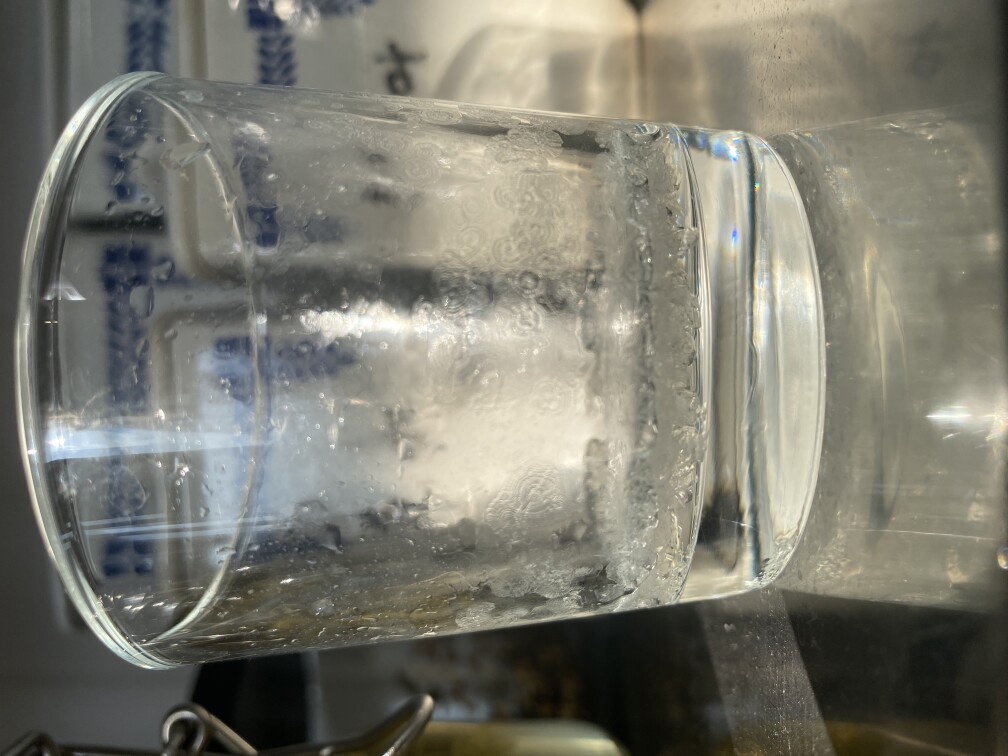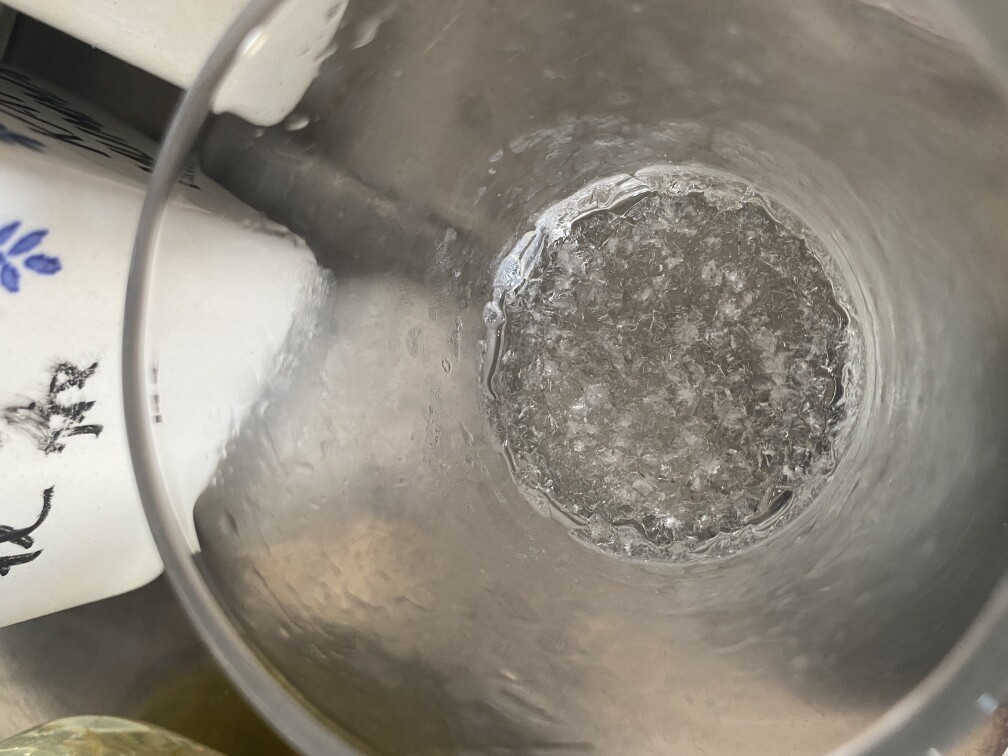Fractal salt
You know when you put salt in water when cooking your pasta? You might take it for granted that the salt “disappears”… Technically, what happens is that it dissolves, which means that the salt (usually sodium chloride) breaks up into free sodium and chloride ions in water. Now the question is: have you ever put so much that some of it does not dissolve? Then you have hit the solubility limit.
It turns out that, every liquid can only dissolve a certain amount of solid. Adding more after saturating the solution will simply sediment the material to the bottom of the container. Similarly, if you dissolve something completely and remove liquid by evaporation, the concentration gradually builds up, and once you hit the solubility limit it will start to precipitate. I was curious about how this would actually look like in practice, so I performed an experiment where a glass of water was saturated with regular table salt just beneath the solubility limit and then let stay on the kitchen counter for a couple of days. I expected that it would just form crystalline grains at the bottom of the jar, but what actually happened I could never had imagined! When I woke up after 3 days it looked like this in the morning
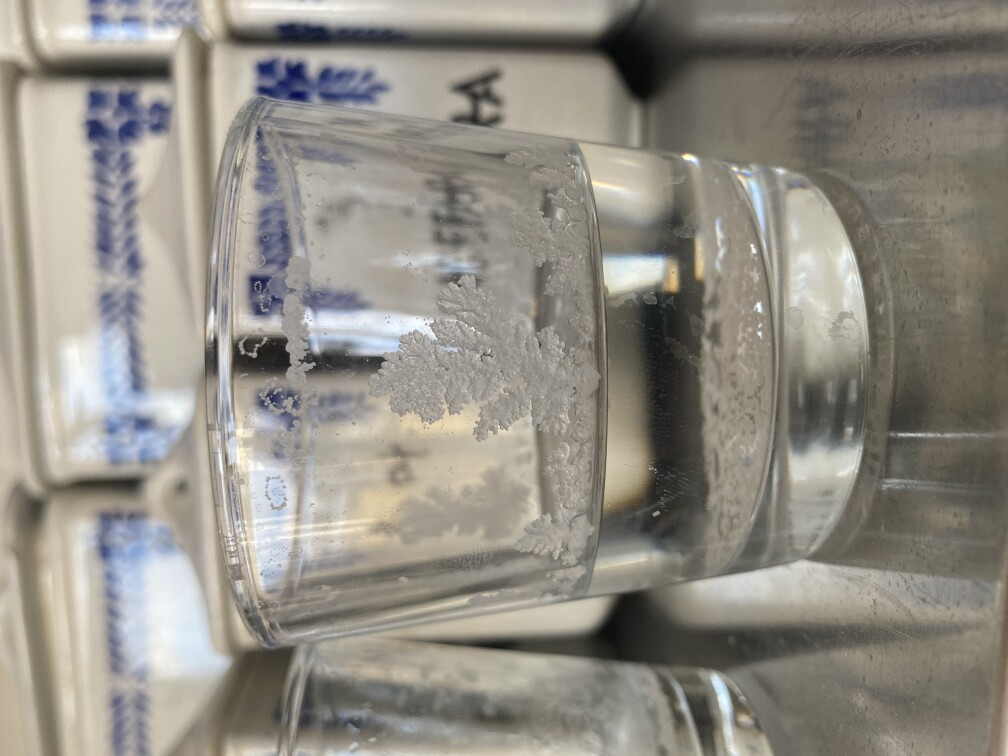
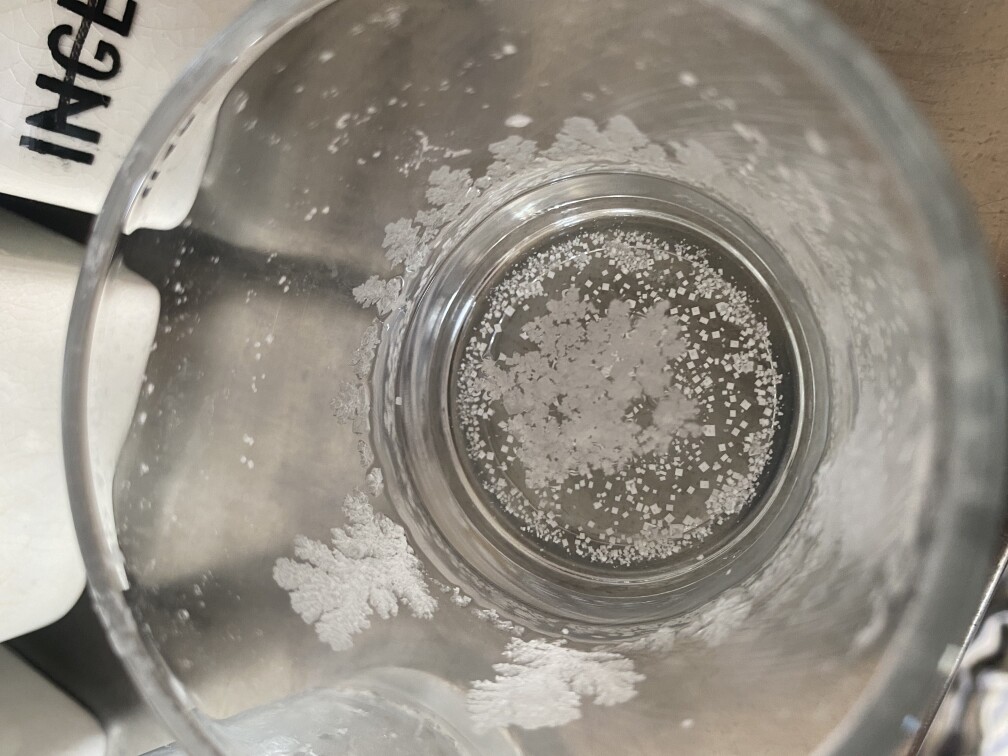
and like this the same day in the afternoon
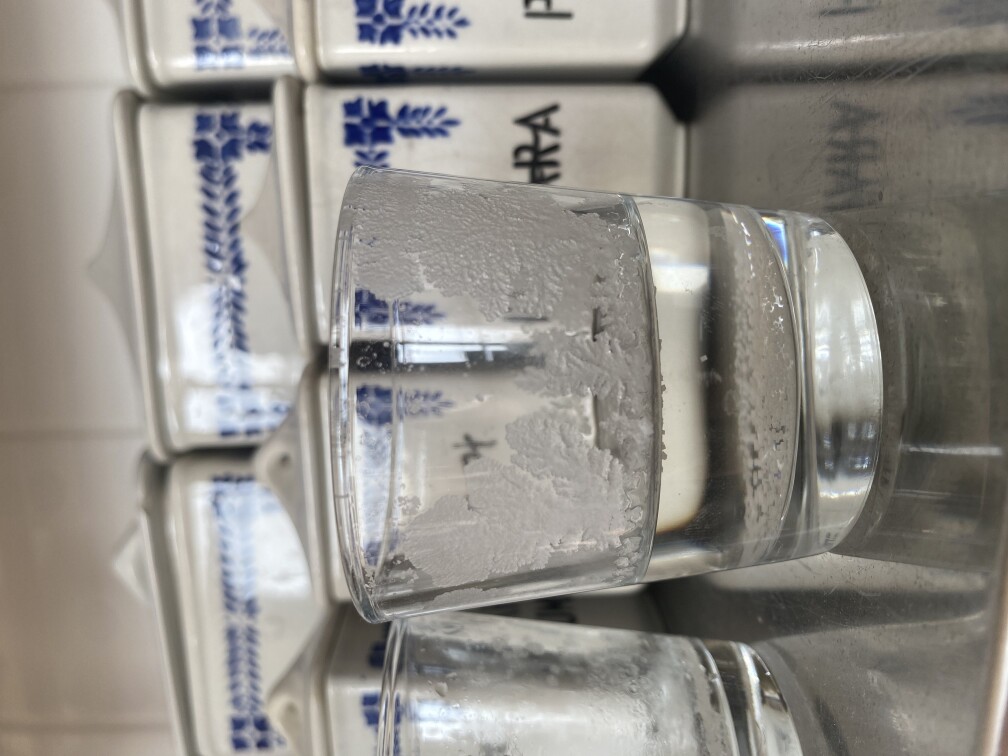

and then later in the evening
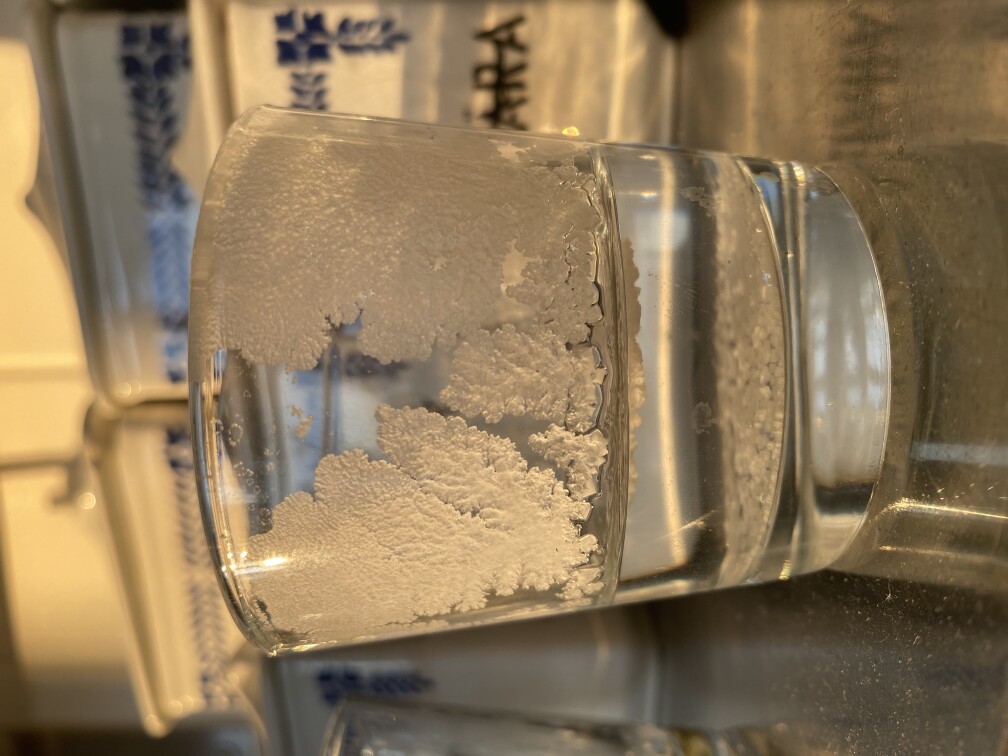
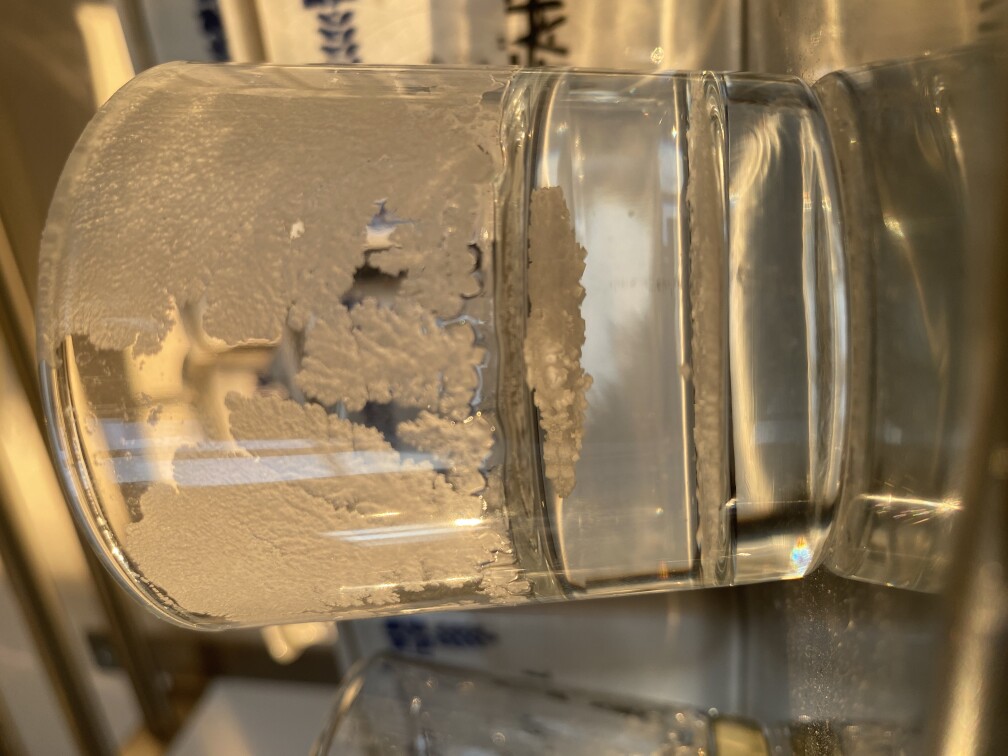
The salt precipitated in several ways simultaneously! First of all, indeed, it forms a sedimentation at the bottom as expected. The crystals have an almost perfect square morphology. Unexpectedly, it also formed a layer at the surface of the water! These grains are also squared shaped, but arrange themselves in a hexagonally shaped cluster. Unfortunately this metastable state did not survive until the next day; the island broke and sank to the bottom. Finally, and most extraordinary, the salt climbs up the walls of the container, forming a beautiful fractal fern pattern! Isn’t it fascinating how this pattern occurs repeatedly in nature? It would be highly interesting to understand the microchemistry driving this odd, usually considered organic, behavior. A good starting point could be to look at theories of dendrimers or that of snowflakes to understand the thermodynamics of fractal self assembly.
The following day (4), the salt had managed to crawl up the wall over the edge
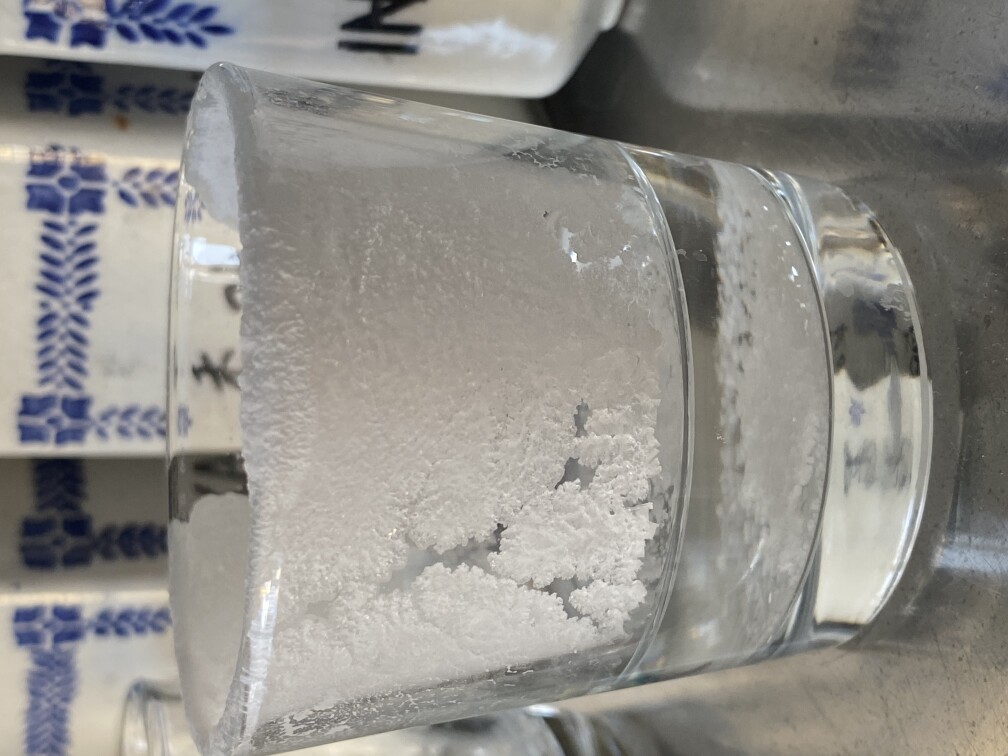
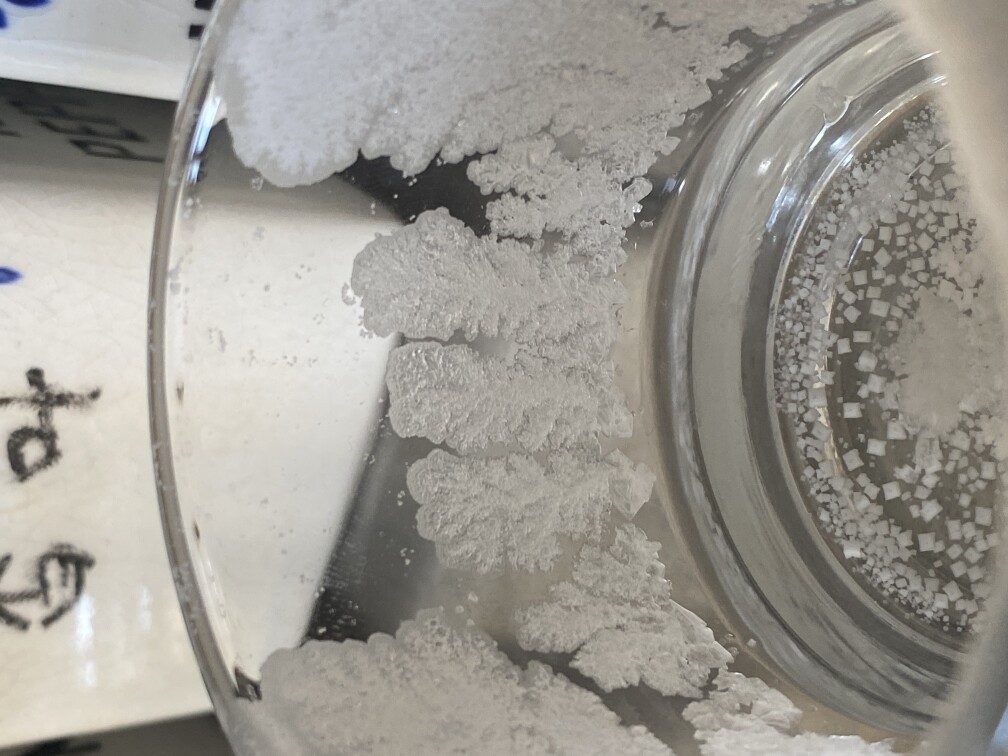
and in the evening if had almost fully covered the wall and a rough texture started to emerge

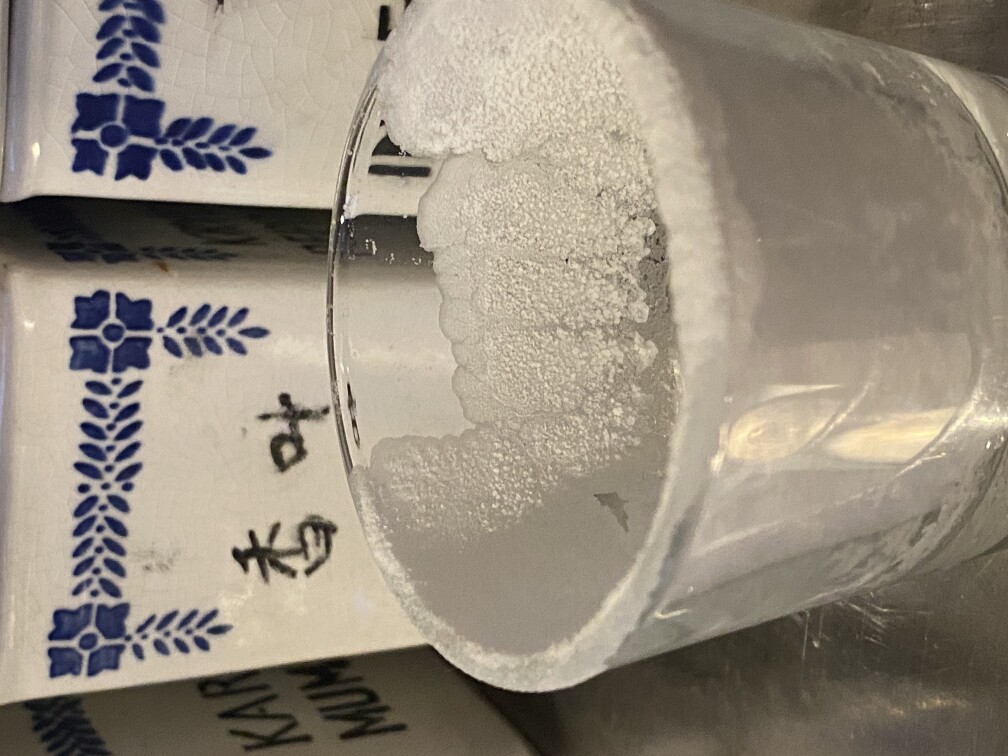
After the fourth day the dramatic effects of the crystallization reaction slowed down considerably, and the remaining fully water evaporated over five days, slowly building up a salty crust.
Day 5:
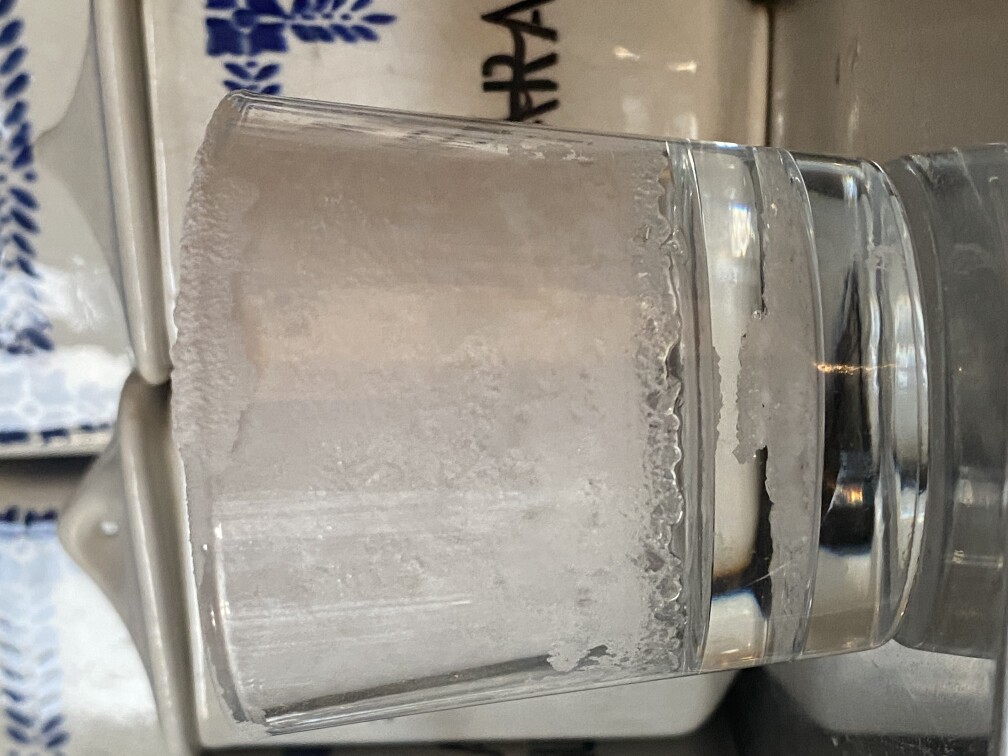
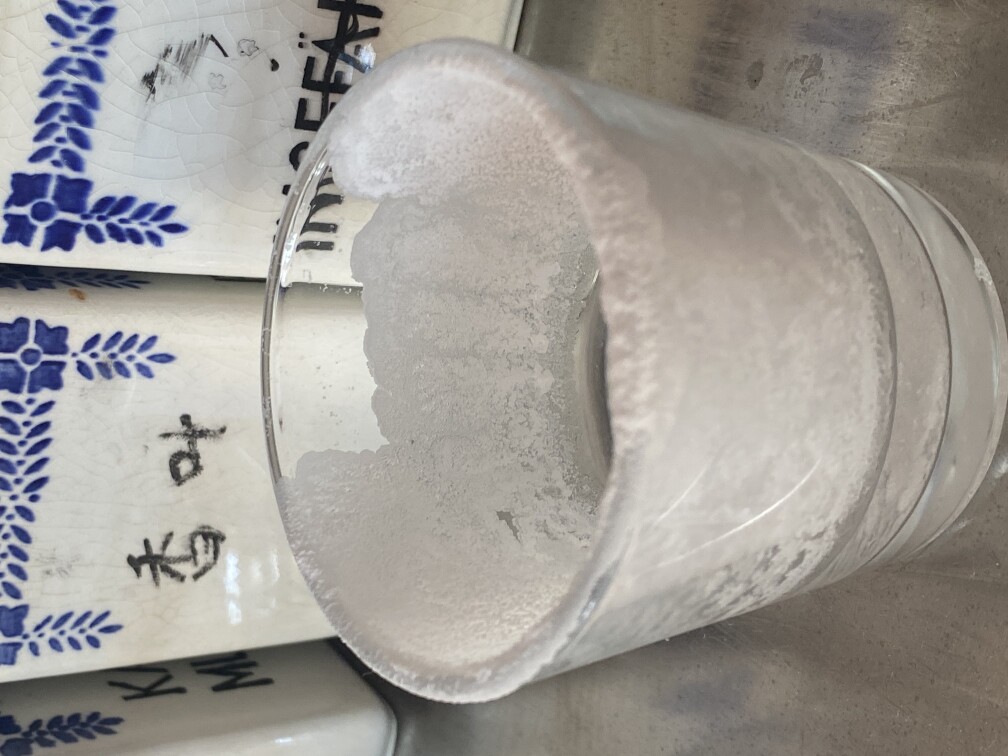
Day 6:
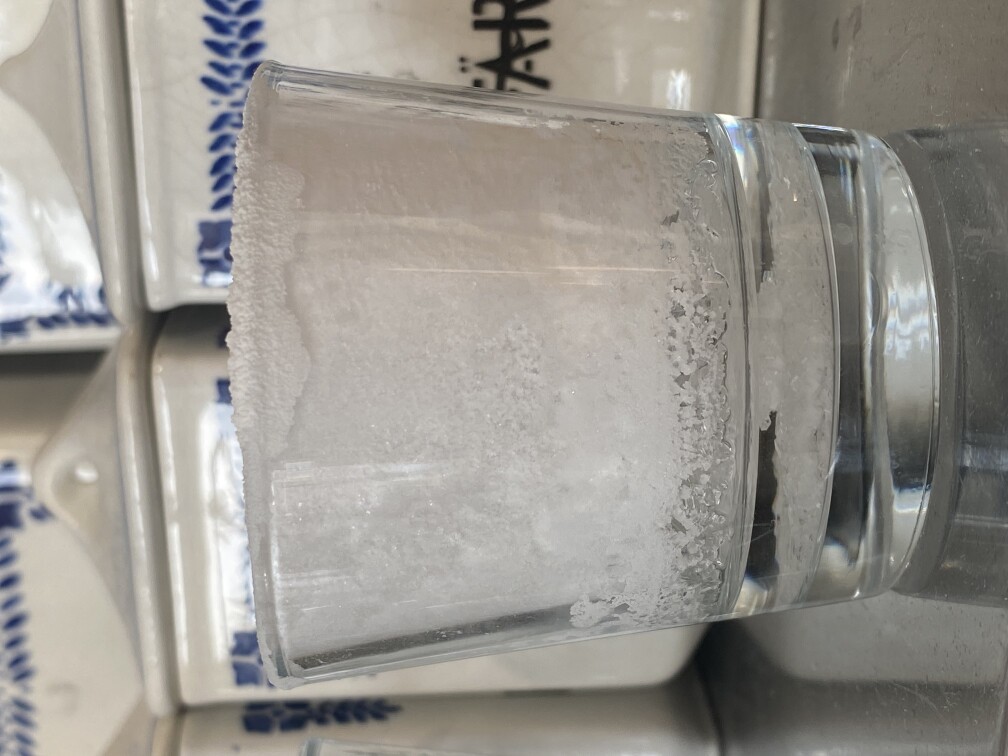
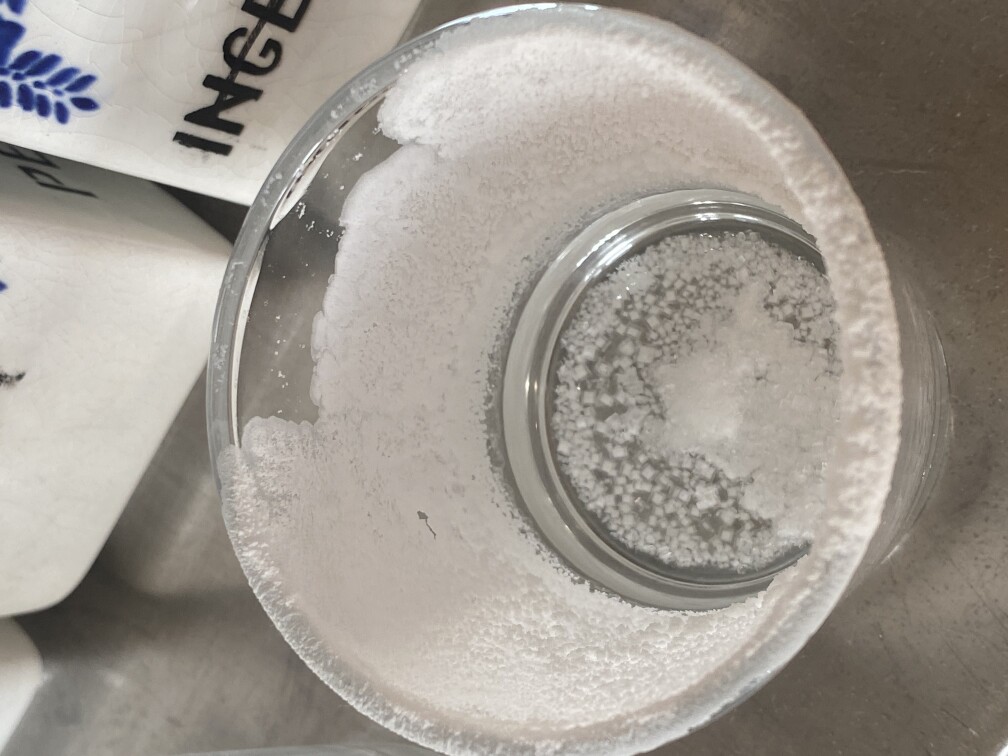
Day 9 (there are still clear isolated islands of salt at the bottom)
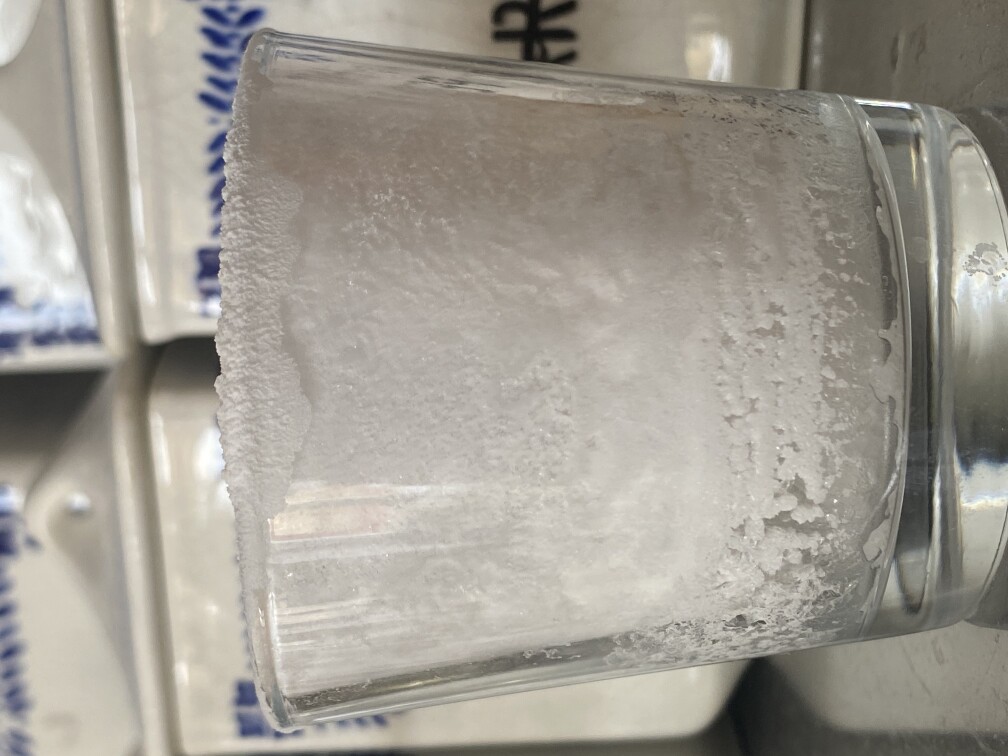
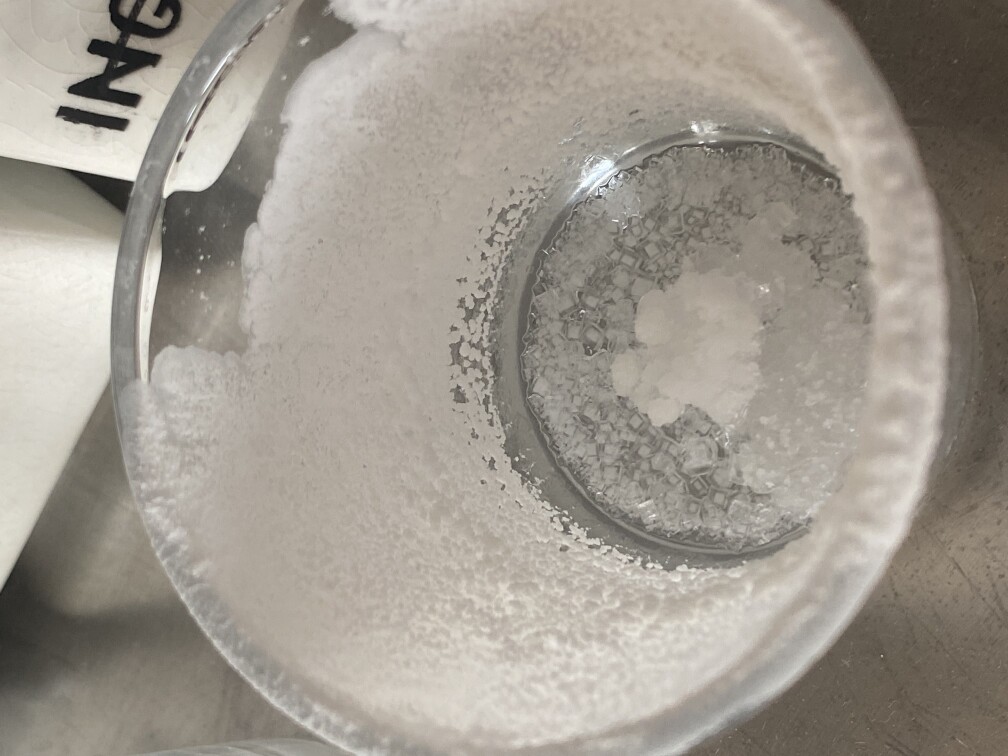
Day 10 (the final precipitate forms a highly rough, perhaps amorphous, layer)
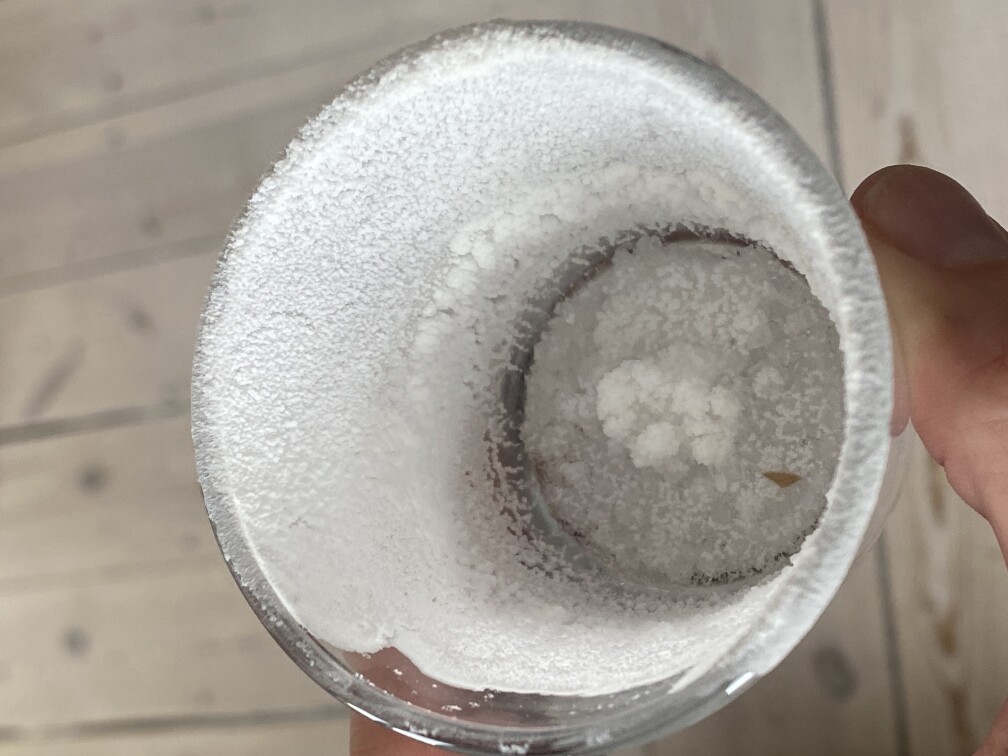
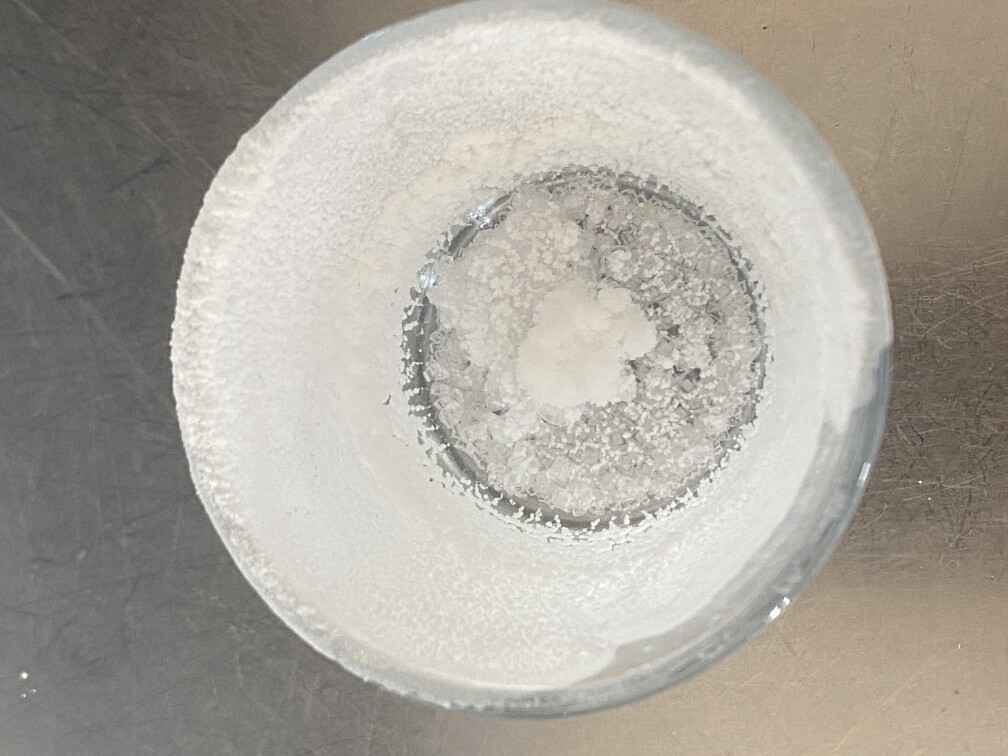
Analysis of the effects
Interfaces and other defects generally promote nucleation, but it is interesting that it happens only at the liquid/gas boundary, and not against the glass wall. I hypothesize that the surface effect happens due to either heterogeneous nucleation at dust particles that has fallen down the jar, or that it is thermodynamically more beneficial (requiring less energy or producing more entropy) to form at the water/air interface than in bulk or at the water/glass interface.
The climbing effect is probably due to capillary action dragging water up (think dipping a piece of paper in water). As the water is dragged out of bulk solution into the fractal crystal it quickly evaporates, allowing more water to be dragged out. As the pattern expands it allows more water to dry per unit time, giving rise to a self accelerating effect, which is probably why, from not showing any signs of precipitation for the first two days, to covering the almost the whole jar in the third. It is also possible that the the initial salt solution was not prepared exactly at the solubility limit, such that it could evaporate for two days without precipitation.
Some details around the experiment should be noted; I ended up taking 1 tsp table salt in about 9 tsp hot water, but I am pretty sure that I managed to dissolve it in 4 tsp one day earlier! I have heard that this can happen in the lab, the quality of tap water is not constant, and heating it up (I wanted to fasten the dissolution kinetics) might have brought some chemicals competing with the salt for dissolution.
I also tried to do the same thing with sugar, which dissolves easier in water compared to salt around a 1:1 volumetric ratio. The precipitation was less interesting. I can think of many reasons for it. First of all, sugar does not dissolve into ions like salt, but is hydrolyzed by breaking the glycosidic bonds in the polymeric chains into monomeric glucose. Since it can solve in water at a higher concentration the solution is much more viscous, which probably makes it too heavy for capillary forces to drag out a crystal along the glass wall. The solution dried completely during day three, the result is shown below:
